Shade Trees For Arizona
Arizona is predominantly arid or semi-arid, with vast desert landscapes. Due to its diverse topography, there are many variations of climate across different regions. Summers in Arizona are typically very hot and dry, especially in the low desert areas like Phoenix and Tucson. So, shady trees in Arizona secures a significant position maintaining its overall ecosystem.
Besides providing shade various species of these shade trees for Arizona provide with various other benefits such as windbreaks, shelterbelts. The vast root system of these trees hold together the soil and prevent it from soil erosion. Many species are significant for their production and aesthetic value.
Planting Shade Trees
Shade trees are those that are tall, wide and have dense canopy providing valuable shade to its surroundings. Planting shade trees are of great value as they provide habitat to birds and other small animals. Economically they are beneficial as they provide one with a cool place to rest in hot sunny days, preventing the cost of using Air Conditioners.
When planted near home shade trees block the direct sunlight reaching and keep the place cool. Moreover in yards, gardens or fields they provide shelter to young plants from heavy winds. Thus for the people living in Southwest Arizona where temperature is significantly higher in summers these trees are greatly important.
For more information about Kitchen Gardening you can visit: Companion Plants For Grapes
Key Factors for Selecting Shade Tree in Arizona
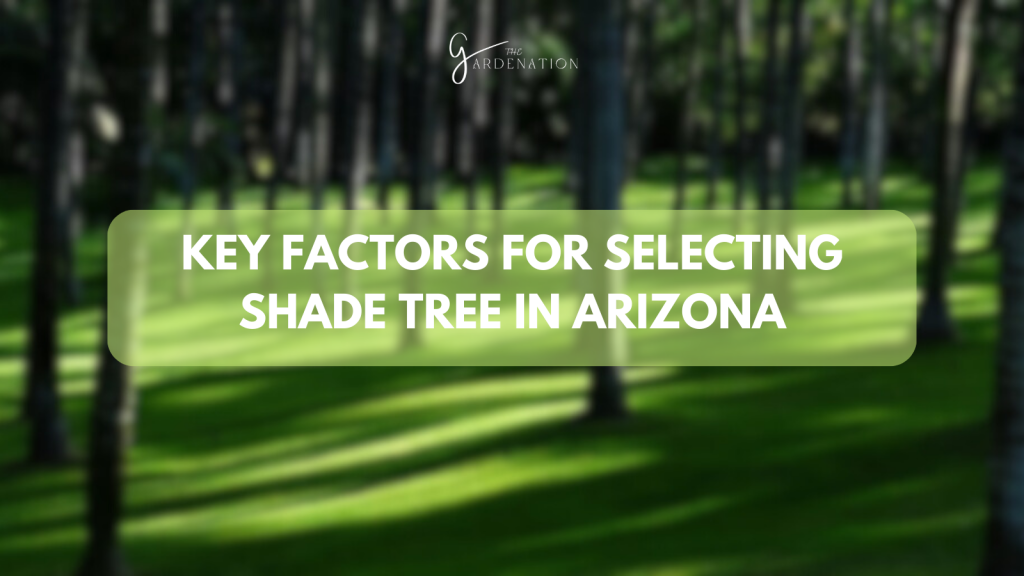
Arizona is a place of extreme climatic conditions. From extreme hot summers to Mild winters and limited precipitation in different regions, due to its diverse topography consisting of high mountains, plateaus, deserts across its regions. When selecting shade trees to plant in Arizona, one must consider several key features to ensure their success in arid climate.
- Drought Tolerance:
Places in Arizona may have limited supply of water. So choose those trees that are highly drought tolerant and capable of surviving long periods with less water availability. So species that have deep root systems and water storing tissue (parenchyma cells) are preferred in arid conditions.
- Soil Adaptability:
Soil conditions in Arizona are not very good, there is alkaline soil with low organic matter in many parts. So one must select those trees that can survive in these soil conditions.
- Heat Tolerance:
As described above, Arizona has a hot climate and extremely high temperatures especially during summer months. So tree species that can survive long exposure to sun and intense heat without wilting and suffering heat stress are preferred. So species that are native to hot climate zones should be selected.
- Water Requirement:
Species that have low water requirements are suitable for places like Arizona. So look for species that once established and matured can survive irregular irrigation. This helps to conserve water. Although, young plants need frequent water for their growth.
- Growth Rate:
Trees require several years to mature. So select those varieties that grow rapidly. However one can choose different varieties according to one’s own preference. Also consider the size at maturity and overall structure of the plant while planting shade trees as they also play a significant role in increasing the aesthetic value of a place.
- Nativeness:
There are various reasons for selecting the native species for plants. The foremost is availability and adaptance. Native species are more adapted to their climate than other ones. They are more suited, require less maintenance and provide important production to native life.
Best Shade Trees for Arizona
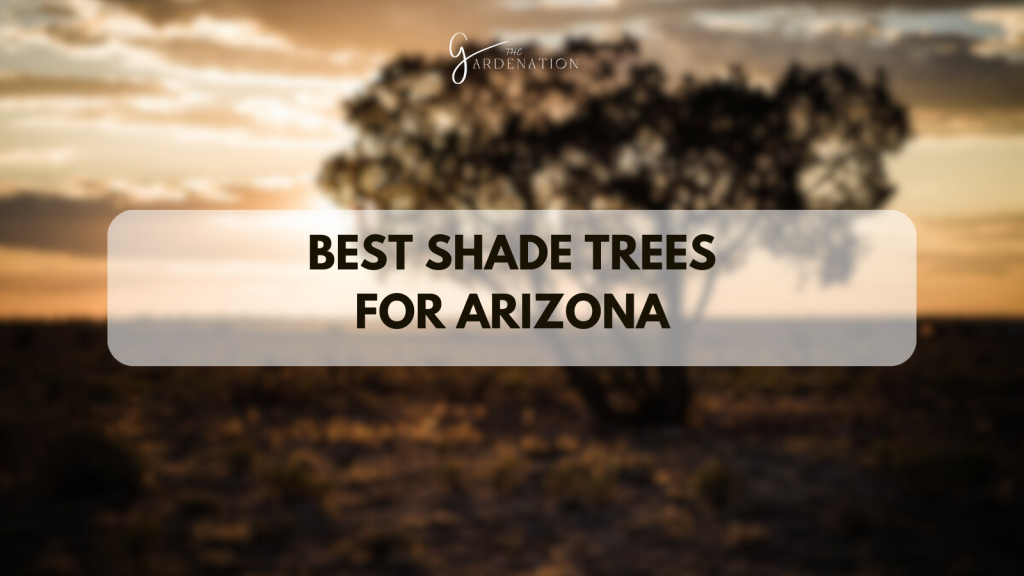
After considering all the key factors for selecting the best shade tree. One can plant the desired variety that will increase the aesthetic value of the place, require minimum maintenance and provide habitat to the small animals depending upon one’s own preference.
Here is a brief introduction about the various species of Shade Trees for Arizona.
Desert Willow
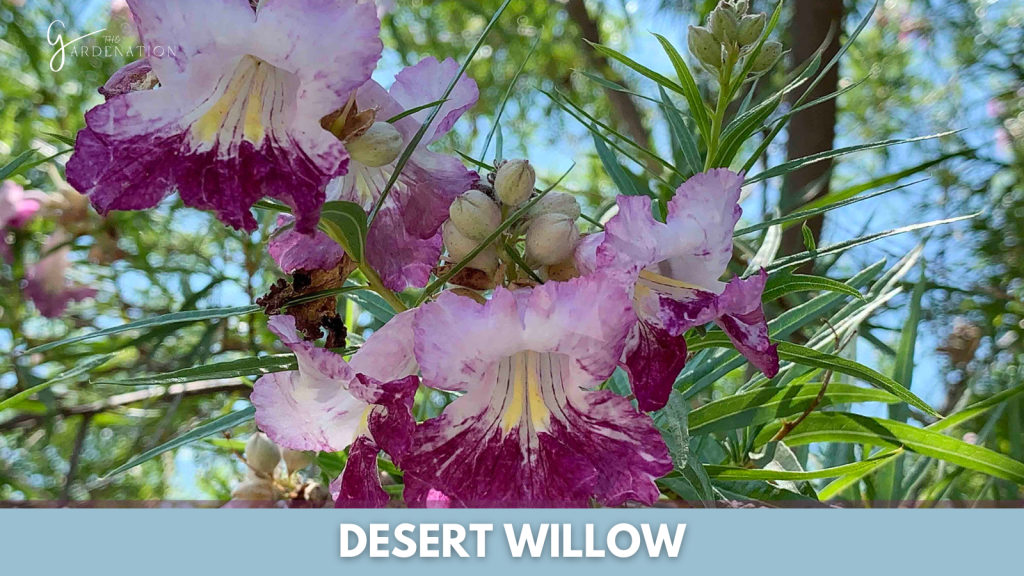
Chilopsis linearis
- Mature Height: 15-30ft
- Appearance: They have trumpet-shaped flowers of pink, lavender or white color with willow like foliage.
- Nativeness: Native to Southwestern US, including Arizona.
Desert willow, despite its name, is not a true willow but belongs to the Bignoniaceae family. It is a stress tolerant variety well-suited for Arizona arid climate. Its slender branches bear delicate foliage and attractive bloom. They have great ability to survive in full sun and well-drained soil. Once established, they require minimal water. If you want to know more about shade trees. do checkout: Best Shade Trees
Palo Verde
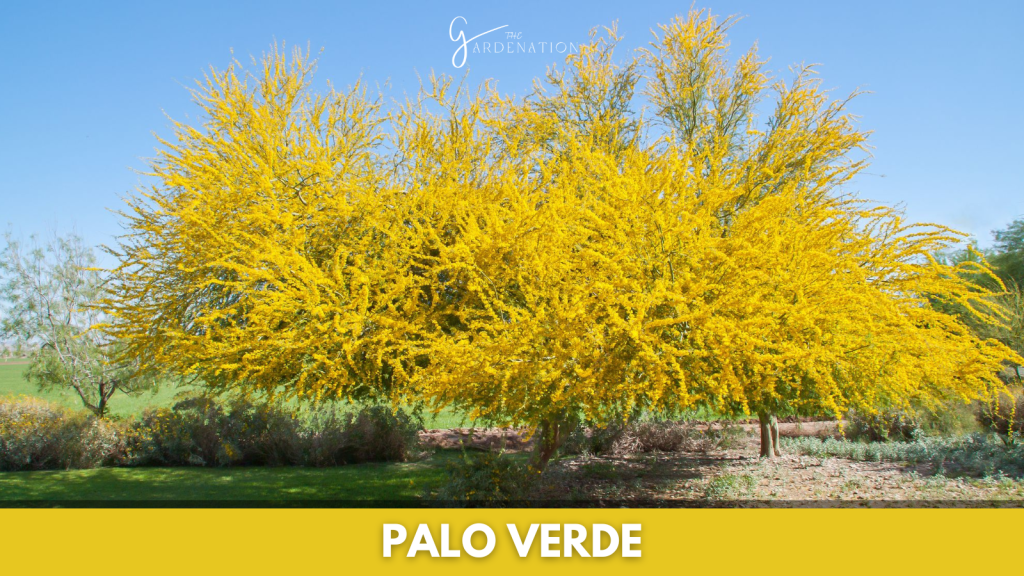
Parkinsonia spp.
- Mature Height: 15-30ft
- Appearance: Feathery,bright green foliage on greenish-yellow bark
- Nativeness: Native to Arizona
It is well adapted to the desert environment. Palo verde are important trees in Arizona, known for their attractive look and ability to survive in harsh conditions. They provide shade with spots and have a long period of spring blooming.
Mesquite
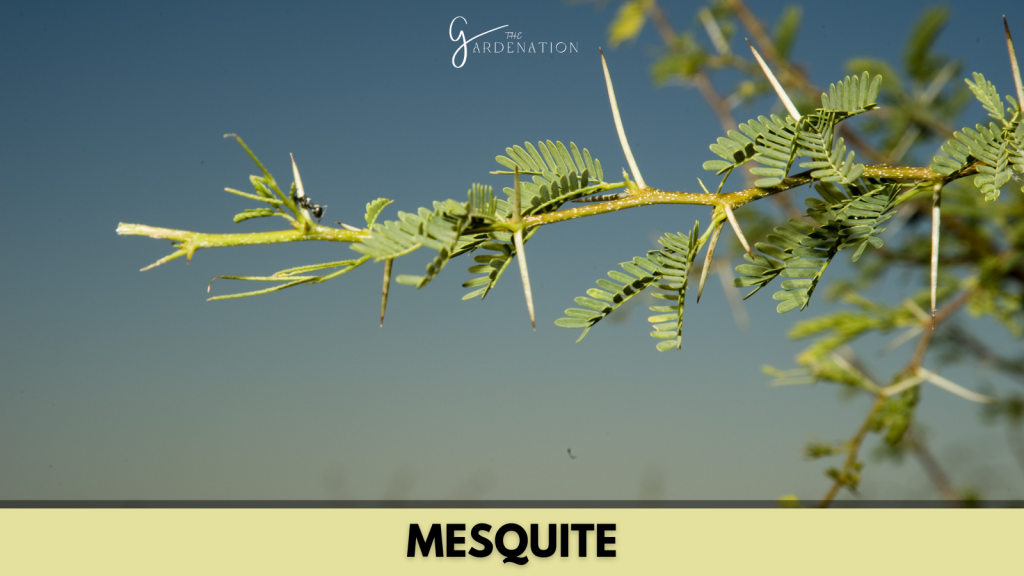
Prosopis spp.
- Mature Height: 15-30ft
- Appearance: Yellow-green flowers over fine airy foliage
- Nativeness: Native Specie
These trees are common in the Arizona desert landscape. They are well known for their drought tolerant ability. These trees have deep root systems that allow them to survive in dry conditions by allowing them to access water from deep underground. These trees are also praised as they provide habitat and their seeds provide food to wildlife.
Arizona Ash
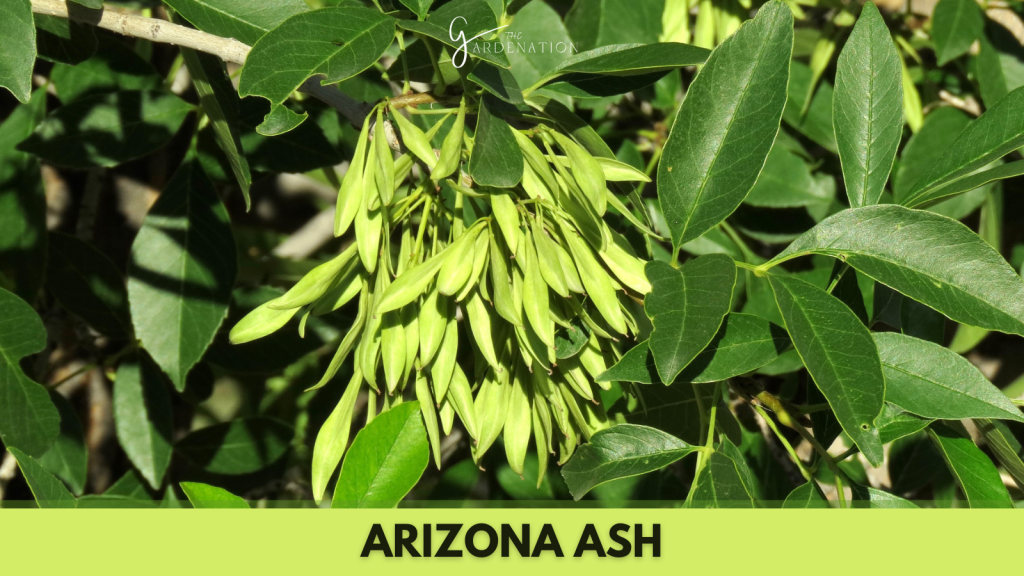
Fraxinus velutina
- Mature Height: 30-50ft
- Appearance: Compound leaves and golden yellow foliage during fall
- Nativeness: Native to Southwestern US and Arizona
Known for its fast growth and ability to provide shelter in summer, Arizona Ash are deciduous trees that has a broad, round canopy and their leaves turn golden yellow in the fall before falling that provides an elegant and vibrant look.
Chinese Pistache
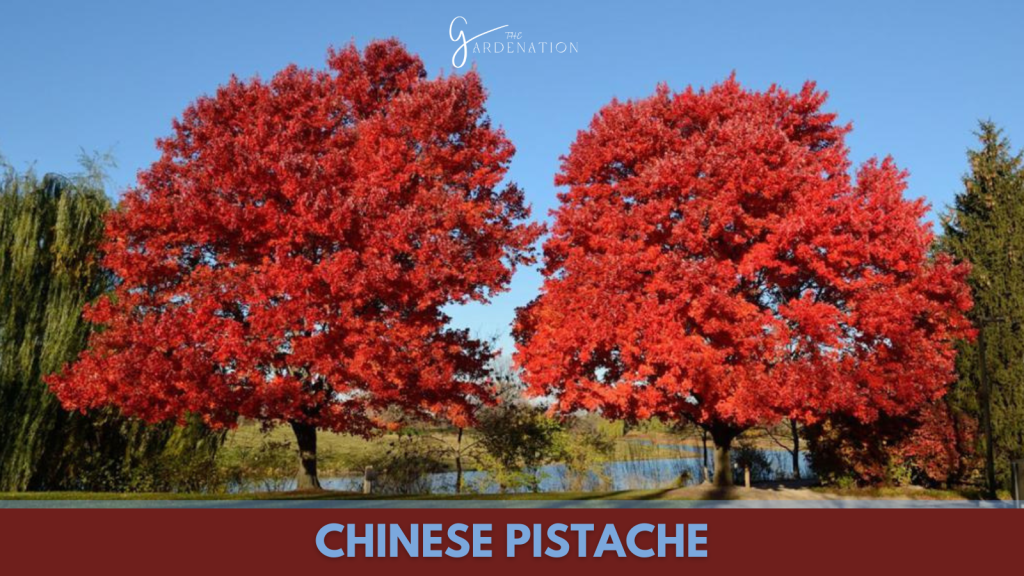
Pistacia chinensis
- Mature Height: 25-35ft
- Appearance: Compound foliage, during fall it shows vibrant orange, red and yellow colors
- Nativeness: Not a native specie
Although it is not a native species, Chinese Pistache is well adapted to Arizona’s climate. It is important for its attractive foliage, which turns vibrant shades of orange, red, yellow in the fall adding more attraction to landscapes. They are low maintenance and drought tolerant once established.
Velvet Mesquite
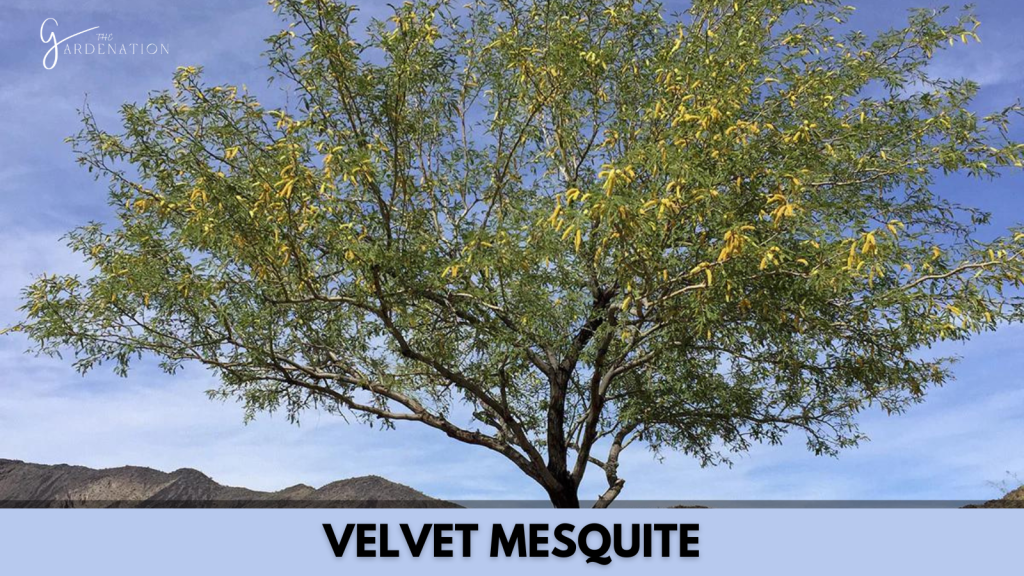
Prosopis velutina
- Mature Height: 25-30ft
- Appearance: Yellow flowers with fine textured foliage
- Nativeness: Native to Arizona
They are very important species ecologically as well as for their appearance. In spring, it produces bunches of aromatic yellow flowers. They also provide food (seed pods) and habitat to native wildlife and are also valuable for the resilience in the arid climate of Arizona.
Blue Palo Verde
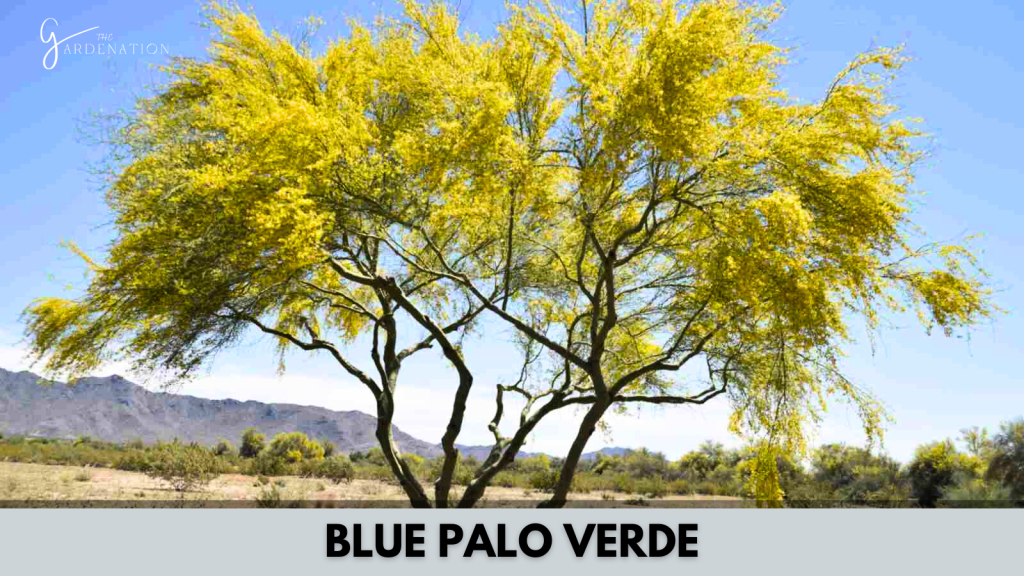
Parkinsonia florida
- Mature Height: 20-40ft
- Appearance: Bluish green bark with blue green foliage and yellow flowers
- Nativeness: Native to Sonoran desert, including Arizona
These trees are the perfect representation of their class, recognized for its blue-green bark and leaves. It produces clusters of vibrant yellow flowers in spring that attract pollinators such as bees and butterflies increasing more value to if. These trees are also great drought tolerant species and have great ability to survive in harsh climates.
Ironwood

Olenya tesota
- Mature Height: 20-40ft
- Appearance: It has dense dark green foliage with purple flowers and hard ironwood.
- Nativeness: Native to areas in Sonoran Desert including Arizona
Like other species this one is also highly adapted to arid conditions playing a significant role in the desert ecosystem. It is a slow growing variety. Once matured it provides the charm of dark green leaves with attractive purple flowers in spring. Besides providing food and shelter to the habitat, it provides dense durable wood used for various purposes.
Foothill Palo Verde
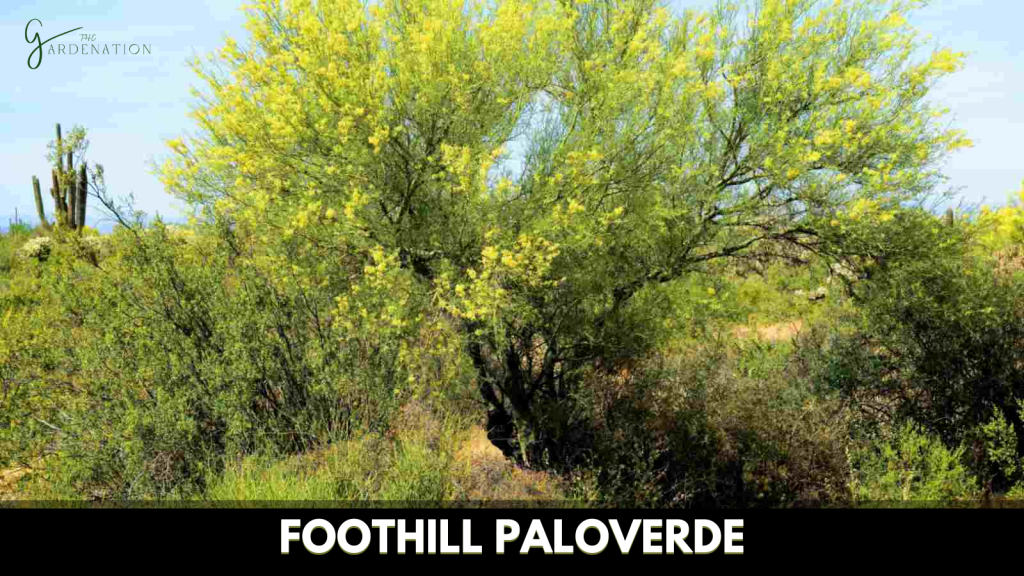
Parkinsonia microphylla
- Mature Height: 15-25ft
- Appearance: Yellow flowers on green bark with fine textured foliage
- Nativeness: Native to areas in Sonoran Desert including Arizona
It is a small species valued for its fine-textured foliage and beautiful yellow flowers. Its small leaves and green bark helps to conserve water making it highly adaptable to drought conditions. This tree due to its broad spectrum provides a large shady area making it a valuable shade tree for arizona.
Netleaf Hackberry
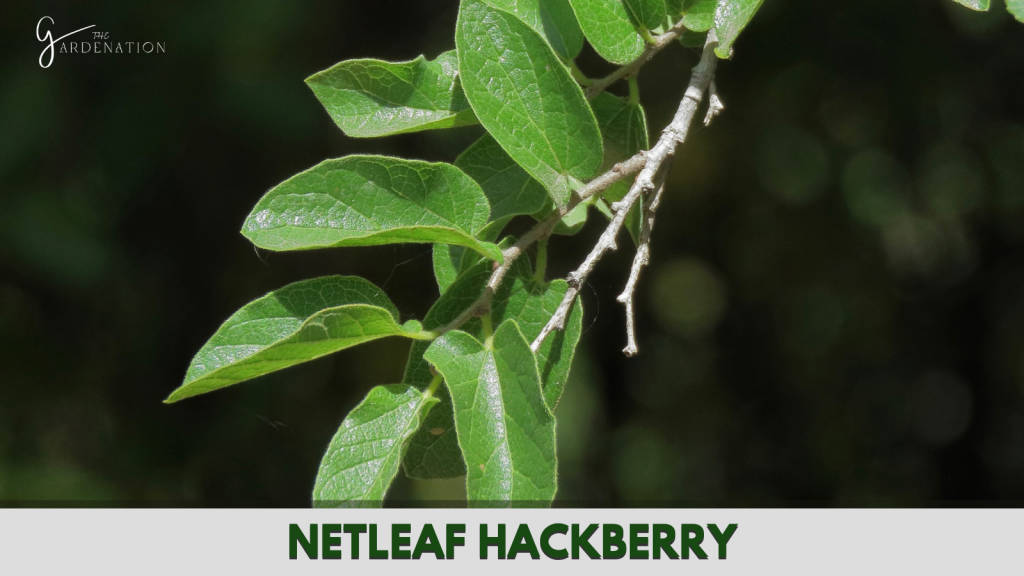
Celtis reticulata
- Mature Height: 15-40ft
- Appearance: It has round canopy and net-like pattern on leaves with production of small berries.
- Nativeness: Native to Southwestern US including Arizona
It is a deciduous variety recognized for its distinctive net-like pattern below its leaves. It has a round canopy and produces small, purple berries that make it more valuable as a food source. It is adapted to various types of soil and suitable for Arizona climate.
Arizona Sycamore
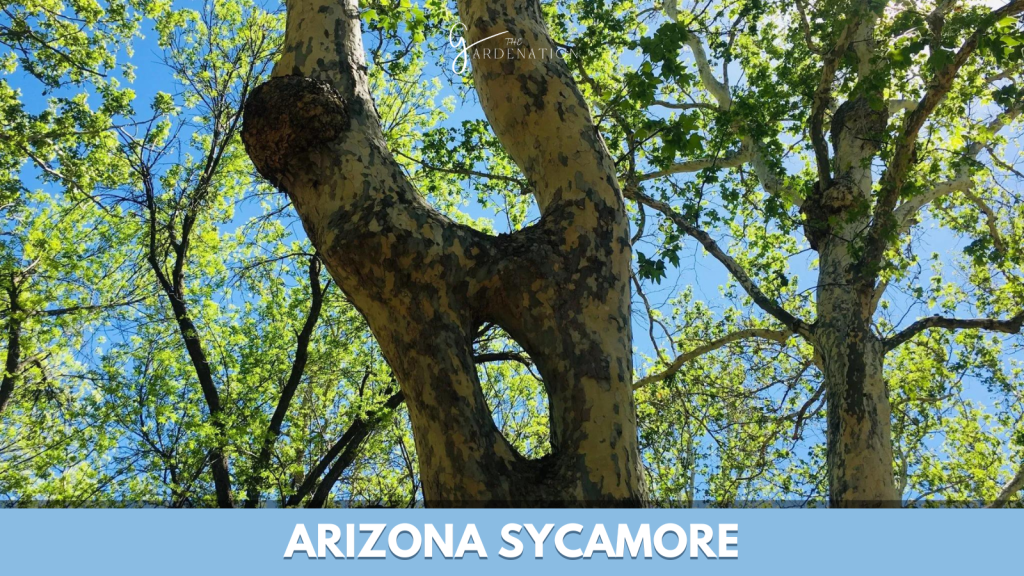
Platanus wrightii
- Mature Height: 40-80ft
- Appearance: It has large broad canopy with palmately lobed leaves
- Nativeness: Native to Southwestern US including Arizona
This tree is characterized by its large, broad canopy and distinct mottled bark, which peel off in patches to reveal lighter inner bark. This tree provides ample shade along rivers and streams and is valuable for its aesthetic appearance in landscapes.
Arizona Walnut
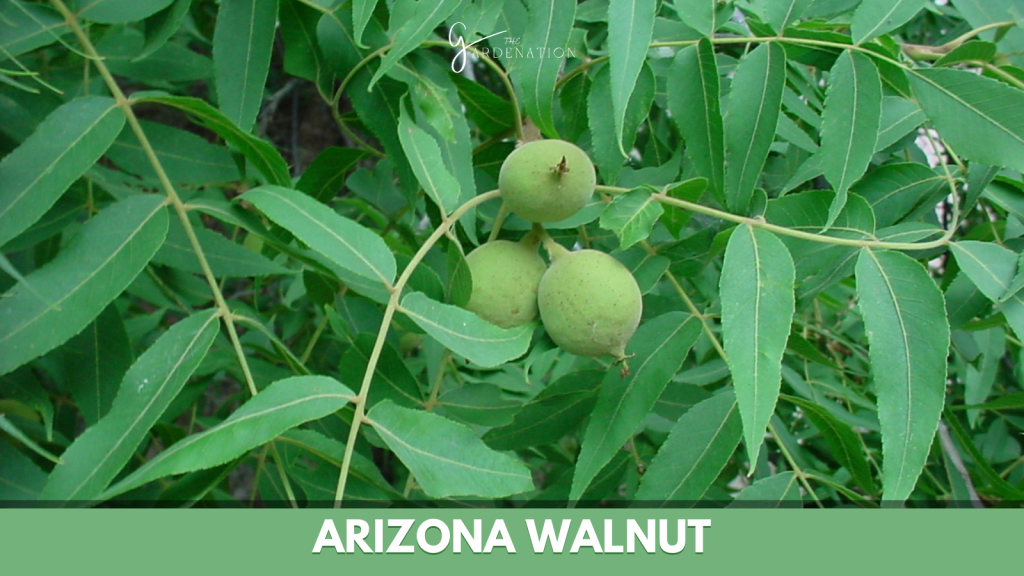
Juglans major
- Mature Height: 20-40ft
- Appearance: It has compound leaves with yellow green flowers and edible nuts
- Nativeness: Native to Southwestern US including Arizona
It is a deciduous tree known for its edible nuts. It produces numerous yellow-green flowers in spring followed by production of small round nuts encased in hard shells. Arizona Walnut are valuable for their role in providing food and habitat to wildlife.
Arizona Cypress
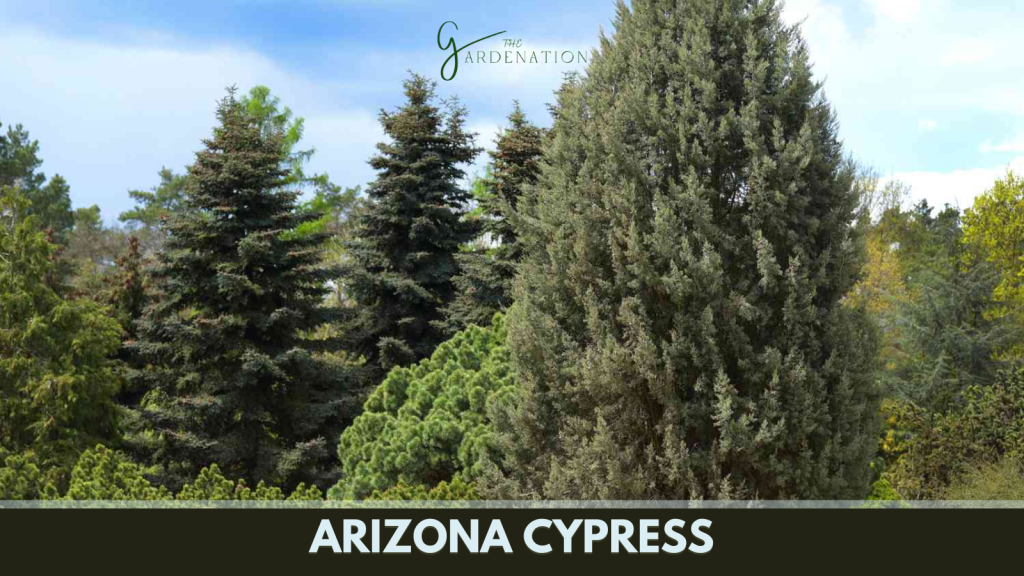
Cypressus arizonica
- Mature Height: 30-60ft
- Appearance: Rugged barks having conical blue-green foliage
- Nativeness: Native Specie
Coniferous trees native to southwestern US, Arizona Cypress are known for their attractive blue-green and conical appearance. Its rugged bark adds elegance to its look. It also provides habitat to wildlife. These are drought tolerant and planted as windbreaks and in areas to control erosion.
Fremont Cottonwood
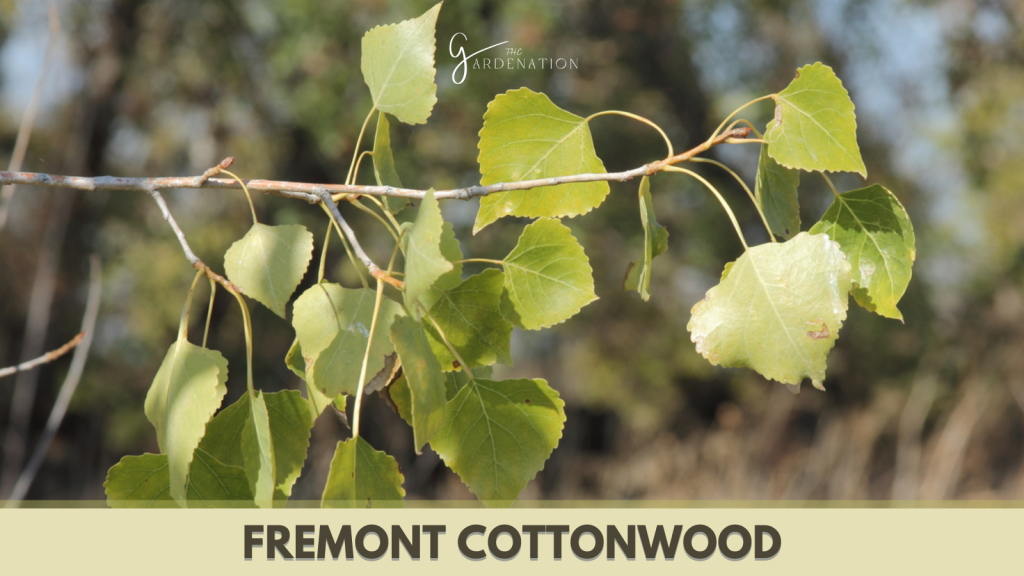
Populus fremontii
- Mature Height: 40-100ft
- Appearance: It has tall, columnar, heart shaped leaves
- Nativeness: Native to Arizona
Heart shaped leaves that turn golden yellow in the fall, fremont cottonwood is known for its distinct beautiful appearance. It is a deciduous tree that drops its leaves in fall providing a pleasuring sight. They are also important for stabilizing riverbanks and have great importance in the riparian ecosystem for providing habitat for birds.
Arizona White Oak
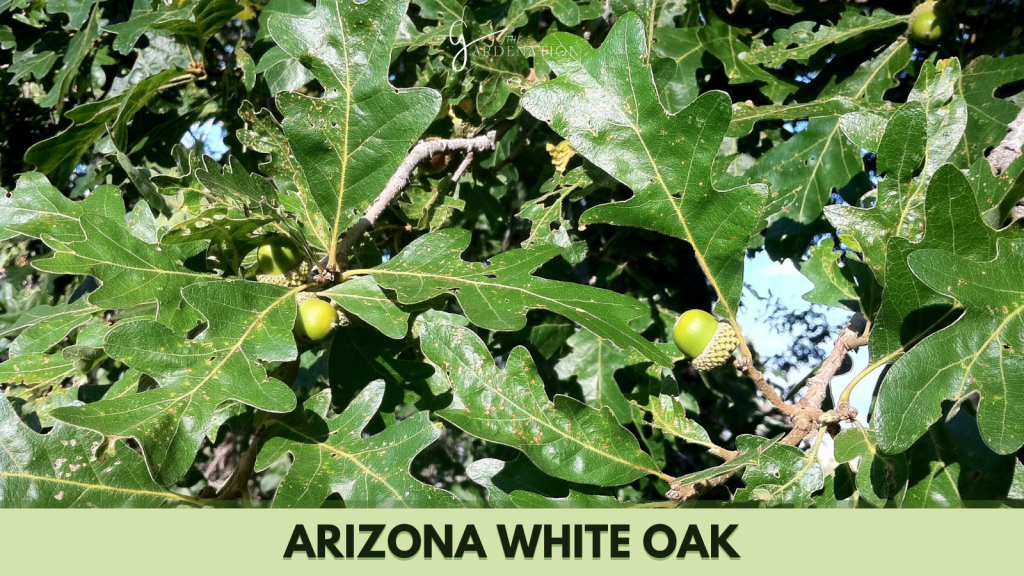
Quercus arizonica
- Mature Height: 30-50ft
- Appearance: Broad spreading canopy with the production of acron. It has lobed leaves
- Nativeness: Native to Southwestern US including Arizona
Arizona white oak is also a deciduous tree. It is valuable for providing shade and aesthetic look to the area. It has lobed leaves and is known for its production of acorns, making it more valuable for the provision of shelter along with food to native wildlife.
So, these are a few tree species with their own distinctiveness and value providing shade and numerous benefits to the ecosystem. Determining their adaptability and unique features one can select the best shade tree from them for one’s region in Arizona.
Frequently Asked Questions
Which is the best shade tree to grow in Arizona?
Choosing the best shade tree for Arizona depends upon personal preference. From my point of view, Palo Verde (Parkinsonia spp.) is an excellent variety as it has great ability to thrive in harsh climatic conditions. Moreover it provides a beautiful and attractive look to place due to its vibrant color and also provides habitat to animals. And it requires low maintenance.
Conclusion
Numerous varieties of shade trees are found to be planted in Arizona even though it has harsh arid climatic conditions. The native species has great ability to withstand harsh conditions and provide clusters of benefits including provision of shade, erosion control, balancing ecosystem, provision of habitat and food to wild life.
So reading about these trees one can select the best suited variety for one’s own region in Arizona. That will provide an elegant look to the palace with soothing beautiful sound birds chirping and a cool atmosphere in its area.
challenging climate especially in hot summers. So shade trees for Arizona can be a great blessing in these conditions.

